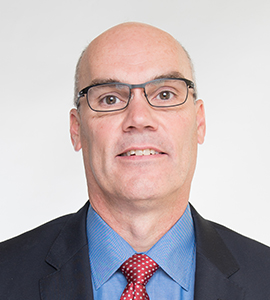Over the years I have seen big changes in our practice of emergency medicine. I remember the first time I heard about an emergency physician down in the San Diego desert who treated his ED patients in the hallways, the waiting room and even the parking lot! He explained to everyone that patients do not like waiting to be seen, and therefore, you must see all patients as quickly as possible, wherever possible.
When I contemplated his concept of seeing patients more rapidly, I compared it to common practice in most EDs of the time. Our patients all waited to be seen, sometimes sitting for hours in the waiting room. But if a provider had a family member or friend come to an ED, we’d hold a bed open, or just see that patient in the hallway. I realized that this was how I would like my family and friends treated. So I started offering service like this at the facility where I worked, and became involved in the development of Rapid Medical Evaluation (RME). My mantra was: “I want everyone to be treated as if they were my family or friends!” It has become my litmus test for all new processes.
Now I find myself again riding a wave of change in emergency medicine, and medicine in general, with the emergence of the Acute Care Continuum. Medicine is putting emphasis on improving the collaboration and transitions in patient care. The historical silos in medicine are starting to fall, and lines are being blurred between the different fields and specialties in medicine. The upshot of this is that many hospitals are looking to improve the working relationship between emergency physicians and hospitalists.
So, again, I ask myself, will this be good for the patient? Is this how I would want to treat my family and friends? And the answer is a resounding yes!
In traditional ED practice, the emergency physician makes a diagnosis that requires admission, and then notifies the admitting physician, possibly writing some initial holding orders. Inpatient care is often delayed until the admitting doc actually sees the patient personally and initiates his or her own evaluation and treatment. But if the patient happens to be a family member or friend of the admitting doctor or ED doc, things happen a little differently. After the ED doc makes the diagnosis, he or she calls the admitting physician. They decide together what other tests or treatment need to be done. The ED doc then orders these tests and initiates care, eliminating redundancy and delay. This process looks strikingly like the new procedures being adopted to integrate the Acute Care Continuum, blurring the boundaries between the ED and admitted care.
It is clear to me that in order to treat all patients like family in a way similar to what Patti Papeluex describes in Attending to the Care in Healthcare, we must unite the practices of the emergency physician and the hospitalist. We must make sure the ED physician knows what will be needed by the hospitalist once the patient is admitted. The ED doc should initiate the testing and treatment that will be required once admitted. The hospitalist must be willing to work with the ED physician to accomplish this task, either by collaborating in the protocol to be initiated by the ED doc or by accepting the judgment of the ED doc. When these things happen the patient has a shorter length of stay and more directed, appropriate care. Changes like this take all the physicians out of their comfort zone. However, from what I see, this is the way I would want my family and friends treated—and the way I’d like to be treated myself. It is gratifying to see that the forces of change today appear to be taking us in this direction.






















